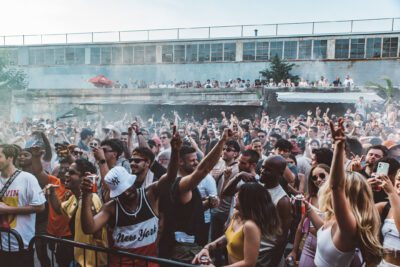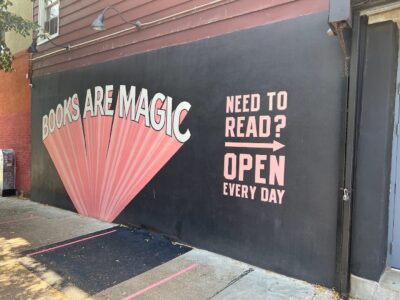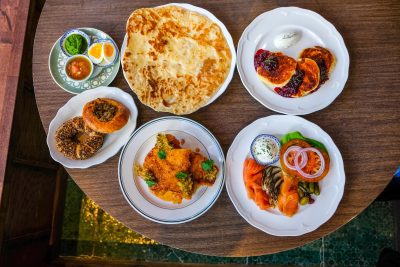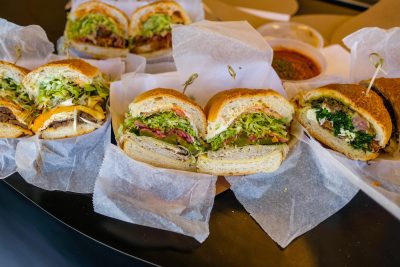Galanin and LAND (Josh Pacheco)
A massive sculpture at Brooklyn Bridge Park forces a dialogue around land
Indigenous artist Nicholas Galanin’s site-specific work spells out LAND using the same materials in the U.S.-Mexico border wall
LAND has landed in Brooklyn Bridge Park. A massive 30-foot tall sculpture that spells out the word LAND, the piece evokes the pop artistry of the 1960s while simultaneously making a profound commentary on our relationship to the spaces we inhabit, the people who were here first, and borders we choose to enforce.
The full title of artist Nicholas Galanin’s site-specific work is “In every language there is Land / En cada lengua hay una Tierra.” Named using the two languages imposed by colonial regimes on either side of the border, it opened this week at the Empire Fulton Ferry Lawn in Brooklyn Bridge Park where it will be on view through fall 2023.
Curated by the artistic and executive director of the Public Art Fund, Nicholas Baume, Galanin’s sculpture echoes Robert Indiana’s iconic “LOVE” installation. But by using the same industrial steel that goes into manufacturing the U.S.-Mexico border wall, it invites the viewer to ask questions about freedom of movement and land ownership. And by allowing onlookers to interact — and literally walk inside the sculpture’s layers — Galanin transforms an American symbol of division into a conversation.
“It’s a work about land,” says Galanin. “It’s a work about colonialism and borders and violence.”
It also invokes the indigenous movement to reclaim that land: Land Back is a modern concept seeking to dismantle settler-colonial power structures by placing control of indigenous futures back into indigenous hands. It is a 400-years-in-coming decentralized action by indigenous people to reclaim sovereignty over their histories, cultures, and ancestral territories through self-determination.
“Our nations, cultures, and communities have existed that way for tens of thousands of years. We have cared for this place and cared for water in ways that aren’t necessarily capitalist driven,” says Galanin.
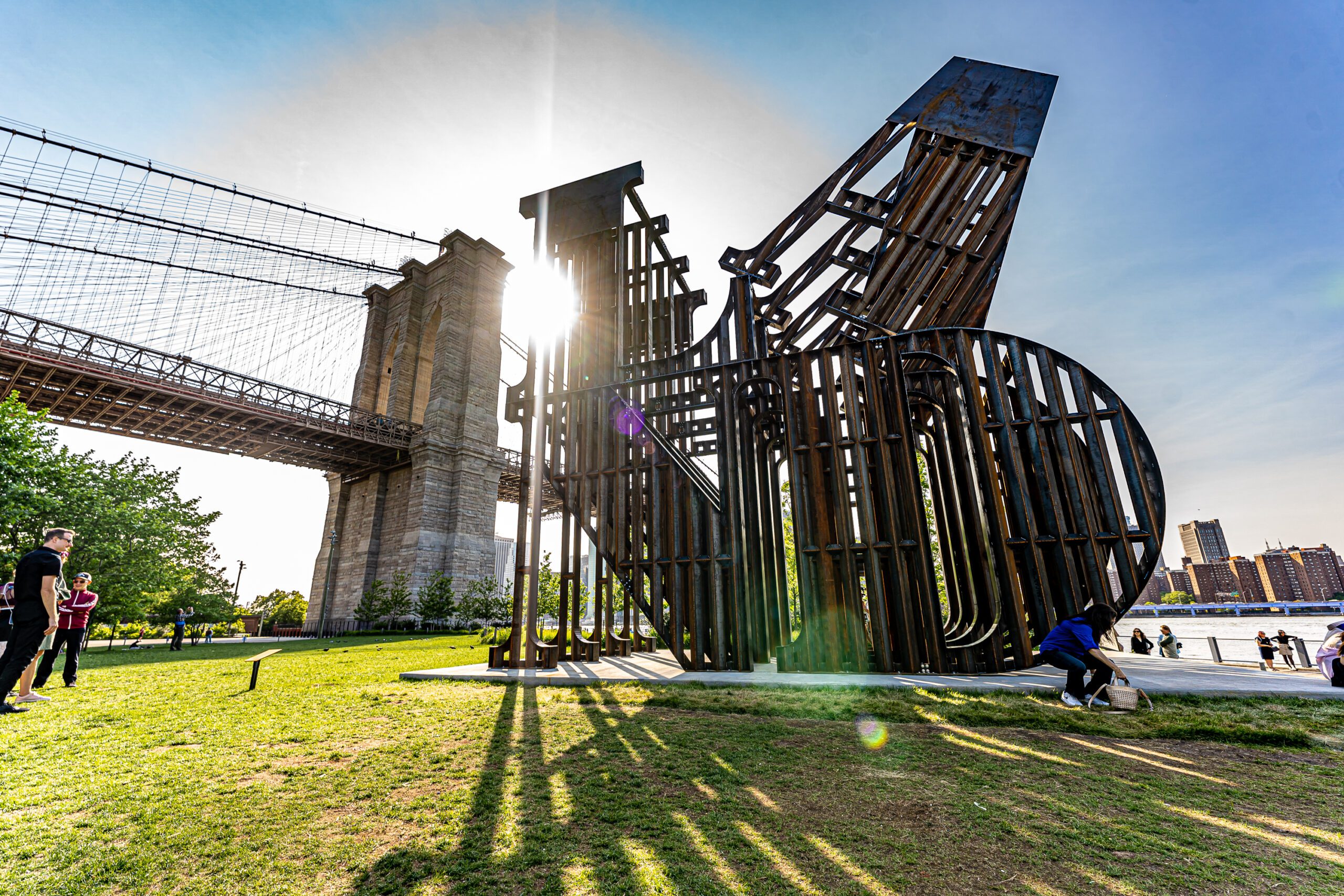
Photo by Josh Pacheco
Brooklyn Magazine sat down with both Galanin and Baume to discuss the origin and intent of the sculpture. This interview has been lightly edited for flow.
The piece is meant to resemble Robert Indiana’s Love sculpture. How does that pop culture reference intersect with your vision and design?
Galanin: There are a lot of layers to it. It’s a work about land. It’s a work about colonialism and borders and violence. The materials were diverted directly from the ongoing construction of the U.S.-Mexico border wall, with the anti-climb plates at the top. That material is essential to the conversation here, as is the text form and use of pop imagery, for not only land but those that come from the land and that connection and love, and how unethical it is to restrict it across indigenous nations and indigenous territories.
Why use two colonial languages and not indigenous languages, whether it be Náhuatl, Purépecha, or Diné?
Galanin: It represents those two sides of this national border contributing to language genocide. The title of the work includes two colonial languages, and it’s crucial when we look at these borders and the lands that they cross, to consider the power structures and violence that takes place to remove not only indigenous people but their spirituality, their social care systems that they have in their communities. To remove language. I feel like the work is broad in that sense. It’s not only this border that we’re referencing in this. It’s the U.S.-Canada border, any colonial borders.
That was my next question: Why focus on the Mexico U.S. border and not the Canadian border?
Galanin: I don’t feel like it’s separated. The construction here is referencing the current brutalist construction of the wall. If anything, I think the conversation could be: “Why is that construction happening on one side and not the other side?” And I think we all know why.
Nicholas, how did you come to acquire the material and what did it cost? What was that negotiation process like?
Baume: Maybe it’s magic. There’s some magic to sourcing this material. Nicholas had the concept, and then a part of what Public Art Fund does is support the artists we’re working with by helping to research materiality, producers, suppliers, and fabricators. We found that there’s only one supplier of this material, and it’s exactly the same supplier that supplies the material to build the border wall. So, this very material that Nicholas made the sculpture with would have potentially become a part of the southern border wall if this sculpture hadn’t been made.
Was it hard to secure the material? Were there politics behind that, or can you not talk about it?
Baume: Oh, no, it wasn’t hard to secure in that it’s not a rare material, but it is in demand for the wall. We did have to make sure that we put the money down and said, “Okay, we need this much of this material” because otherwise, we’d have to wait six months. The material is rare in the sense that it’s a very particular thing. It’s a standard industrial gauge, steel tubing explicitly produced for the construction of that wall.
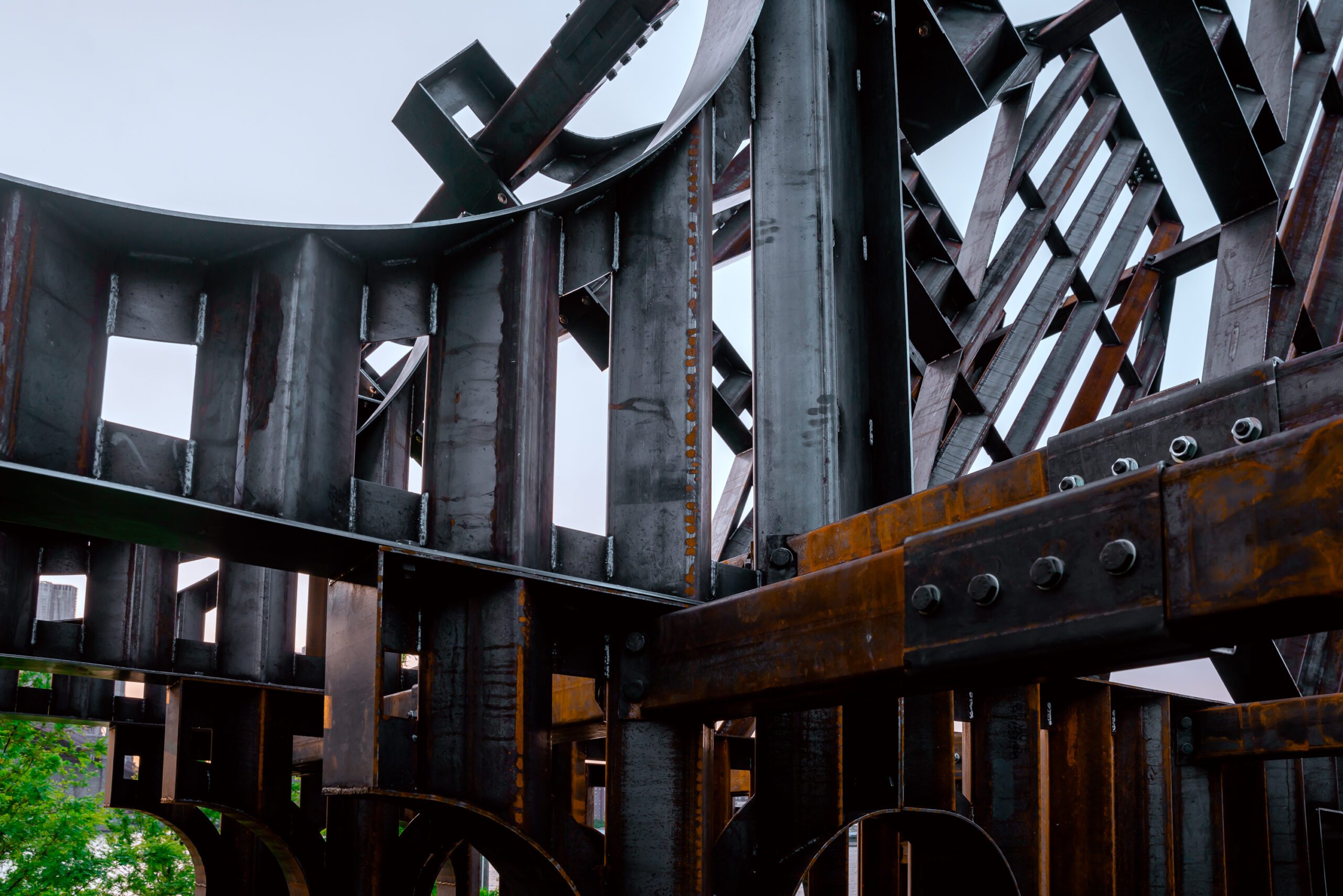

Photo by Josh Pacheco
What would it look like to you for indigenous people of the north and south to exist and commune uninterrupted?
Galanin: Land Back is one significant conversation that I feel is tied into this. Sovereignty is one aspect of this. Our nations, cultures, and communities have existed that way for tens of thousands of years. We have cared for this place and cared for water in ways that aren’t necessarily capitalist driven — even the term “resource,” you know, we don’t think of things like resources as a way of identifying with the land. I feel like things would look way better for the future of our generations.
I’m on the Artist Council for Sealaska Heritage. We’ve tried to voice the importance of not logging old-growth red cedar because it’s not a sustainable thing that comes back in our lifetime at all, and it’s of cultural significance to our entire community. We have to have access to that for future generations. They did put away some plots of that land for cultural use, but you know, there’s more, there’s so much more.
Are you close to any of the logging resistance in Alaska?
Galanin: Yeah. I’m connected with a lot of the community in Alaska, and it’s not just logging. It’s the commercial fisheries, the pipeline, and the drilling that was just opened up. They impact our communities, first and foremost. And oftentimes, the difficulty with that in the political sphere is that our voting power is so limited because our communities are smaller and isolated. The larger cities have a lot of control and say over our spaces and our homes. It affects us immediately. With the way we live, the way we care and survive and sustain our families.
Why did you choose to install the artwork here? What is your tie to the Brooklyn area?
Galanin: Well, I was invited via public art to our art fund to imagine work and a project. We visited various sites. A lot of my work is site-specific. And one thing I learned through that process is how common and connected everything is to our histories and our futures.
And Brooklyn and New York, Lenapehoking specifically, is also deeply rooted in these conversations with immigration, with colonialism, with migration and capitalism. So, this is a great opportunity and space to engage those things in this work, but also this specific site for something this scale and size, which was very intentional to work with the scale and material. The work would be experienced differently if we were placing this in other sites.
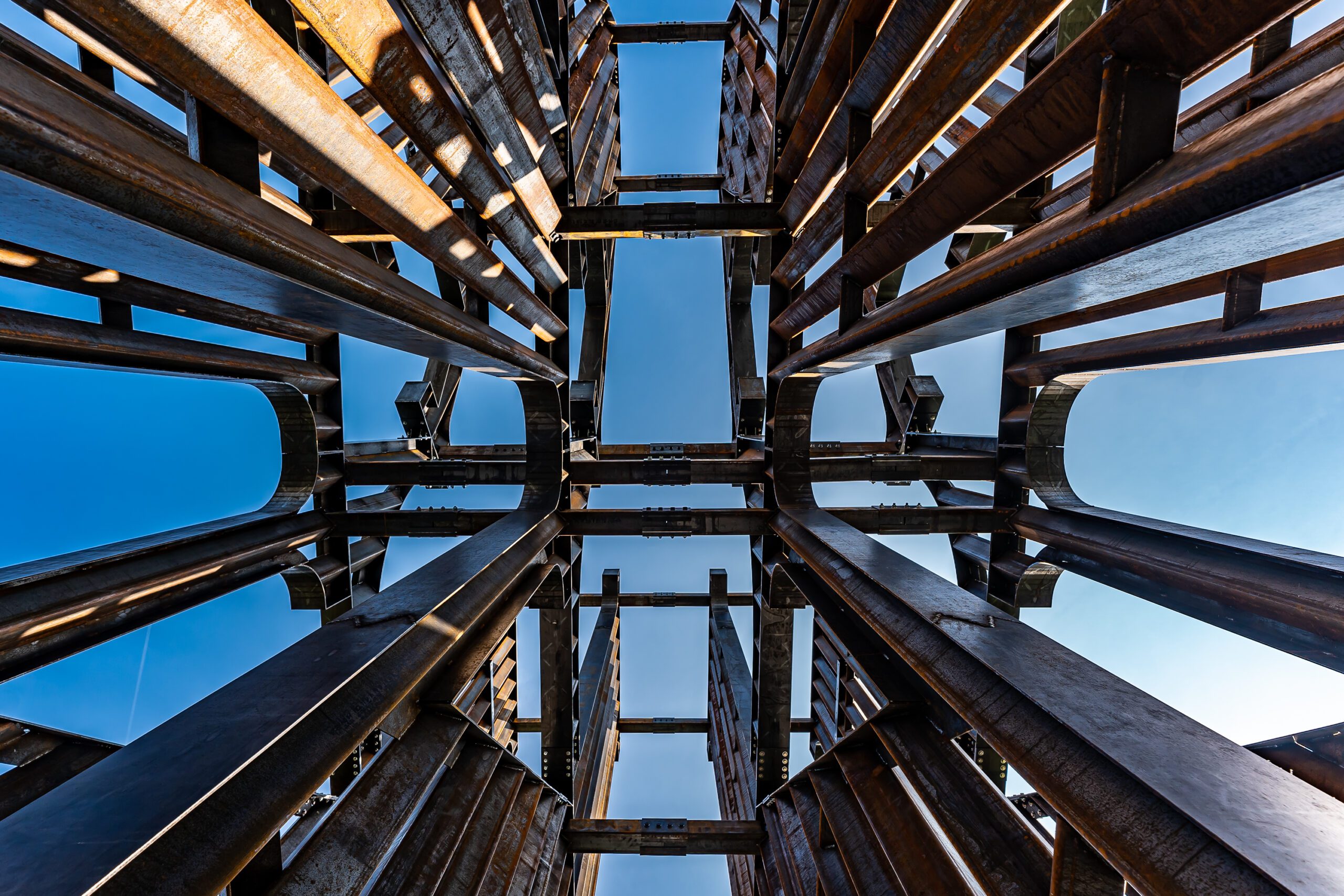

Photo by Josh Pacheco
What has been your favorite part of Brooklyn and what do you like to do in your off hours?
Galanin: Off hours?? [Laughs.] Sleep! No. I have some friends here so I’m always grateful to see those folks. My favorite part is always just exploring. Music. I love going to see live music. I love going to see the museums and the spaces and the shows and the collections we have. I live in an isolated community of 8,000 people. So, there’s a lot of experiences and things here that are not available, or are not things that I would see in my home.
You’ve said this piece resists categorization. I was wondering if you could clarify what you meant by that? How might this be categorized from an indigenous perspective?
Galanin: I don’t know if I like categories. My practice resists categorization, and it does so by remaining open, but also by trying not to necessarily be reactive, I suppose. Having multiple entry ways to engage from those that are experiencing the work.
Would this be considered a form of medicine and would you categorize it like that?
Galanin: These materials that had been intended for something restrictive, violent, and divisive. They have been reimagined into a public space where people can gather, share, and speak. For me, that is a healing process. When I do work culturally, like carving a Kootéeyaa or totem pole, I might not say that that object is the healing aspect of it, but the process definitely is because of the specific ways I engage with it.
What specific Sitka values or teachings are evoked in this work?
Galanin: There’s room for engagement and dialogue in this work. We come from communities and places where our access, our visibility, our voice is often actively, purposefully erased. My hope for this work is to provide a place or space for these stories and these messages to be heard, elevated, and told. Especially, for those that might not care to think deeply about these connections and how they’re all tied together.
You might also like 


















